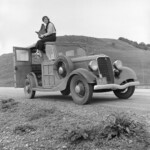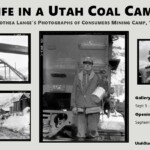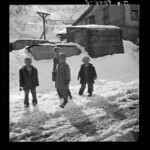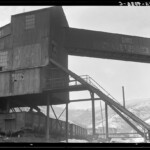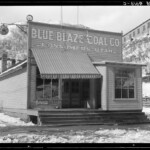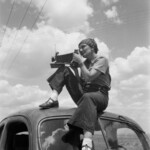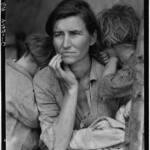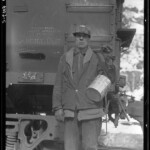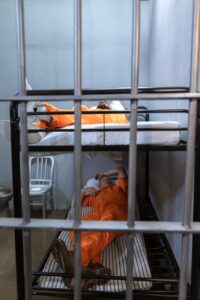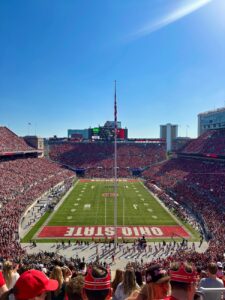Buried Consumer’s Mining Camp 1936
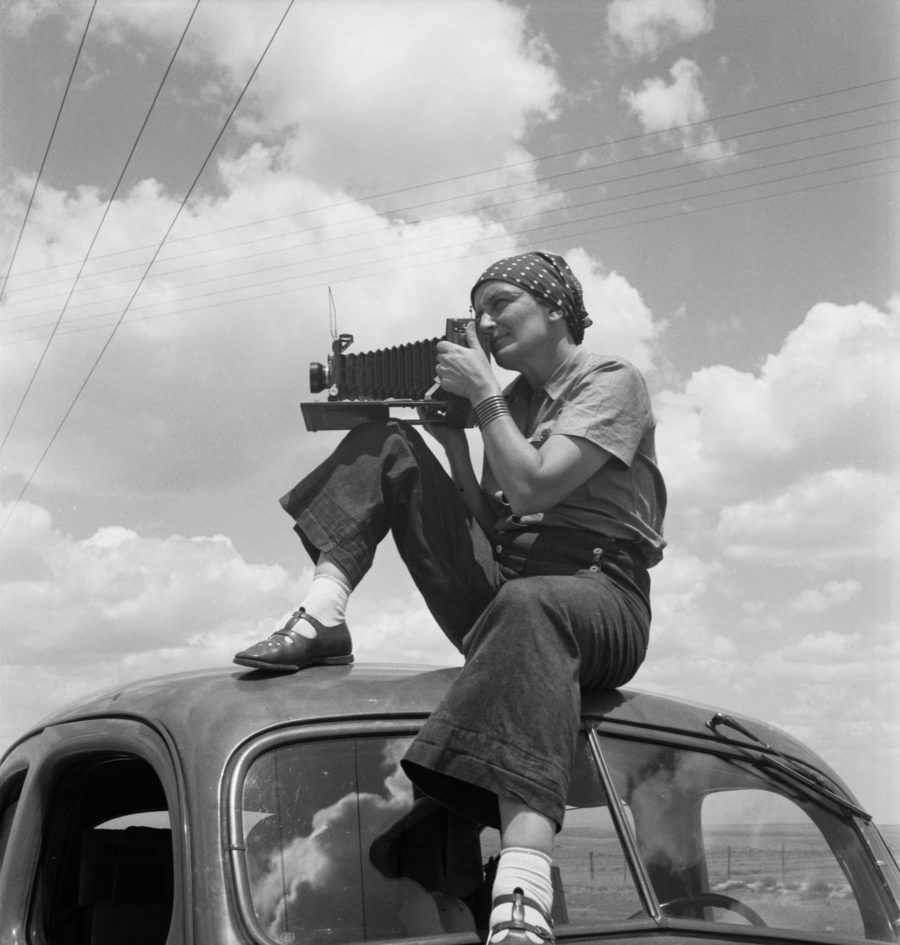
The Dorothea Lange Collection, Oakland Museum of California. Digitized by the Oakland Museum of California.
Gallery East features Dorothea Lange’s Mining Camp photos
A forthcoming exhibit at Gallery East features a series of photographs taken at a Carbon County mining camp 82 years ago by renowned depression-era photographer, Dorothea Lange. The exhibit, “Life in a Utah Coal Camp: Dorothea Lange’s photographs of Consumers Mining Camp, 1936,” runs from Sept. 3-28.
When Dorothea Lange arrived at Consumer’s Mining Camp in March 1936, she had already taken numerous photographs in Nipomo, California the month before, when she took her world famous “Migrant Mother” photograph.
Lange’s “Migrant Mother” photo, a portrait of a near-destitute pea picker and her three children, is one of the most iconic American photographs of the 20th century. As a Federal Security Administration photographer, Lange was assigned to photograph the people and communities affected by the devastating effects of the Great Depression.
The exhibit, comprised of 36 photographs, shows Lange’s remarkable ability to capture the unvarnished living conditions of miners and their families in Carbon County during the nation’s worst economic downturn. As one of several photographers employed under the auspices of the Farm Security Administration (FSA), Lange was expected to make insightful observations, as she framed people and places in her viewfinder.
In fact, the expectations of an FSA photographer stated that they must be “a social investigator,” with keen perceptive skills, reporting “the major currents of our time as they manifest themselves pictorially in any one locality.” Lange’s short assignment in Carbon County was part of a larger effort to document economic conditions throughout the Western United States, along with her FSA photographer colleagues, Walker Evans, Jack Delano, Russell Lee, Arthur Rothstein and Marion Post Wolcott.
Though Lange only spent a day in and around the Consumers mining camp, she captured the impoverished conditions of the miners and their wives and children living in the camp. Scenes include the Blue Blaze mine and tipple, the company store, miners’ shanties and the women and children at work and play in the camp.
Lange’s iconic image of Florence Owens Thompson (“the Migrant Mother”) and her children brought her fame as a depression-era photographer. But her lesser-known images of the working-class men and women of Utah and other Western states deserve a closer look. Lange’s images of the Consumers mining camp are every bit as compelling as those that were more widely seen as documentary observations of the Great Depression.
A reception will be on Friday, Sept. 7 from 6 -8 p.m. Students, faculty, staff and the public are invited. Gallery East is located in the Central Instruction Building and is free and open to the public during the academic year from 9 a.m. to 5 p.m. Direct questions to Noel Carmack, Gallery East curator, at 435-613-5241 or email at [email protected].
